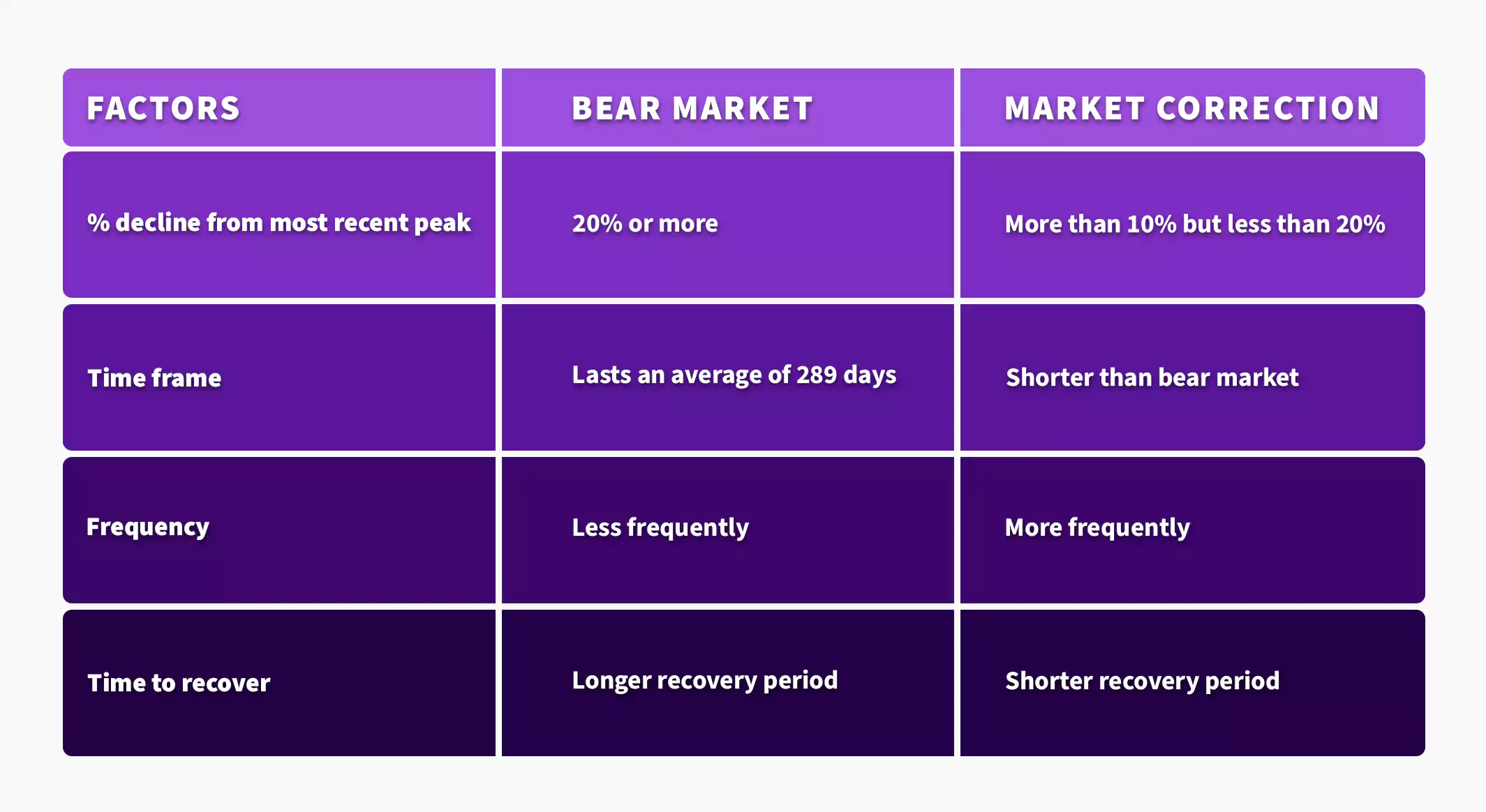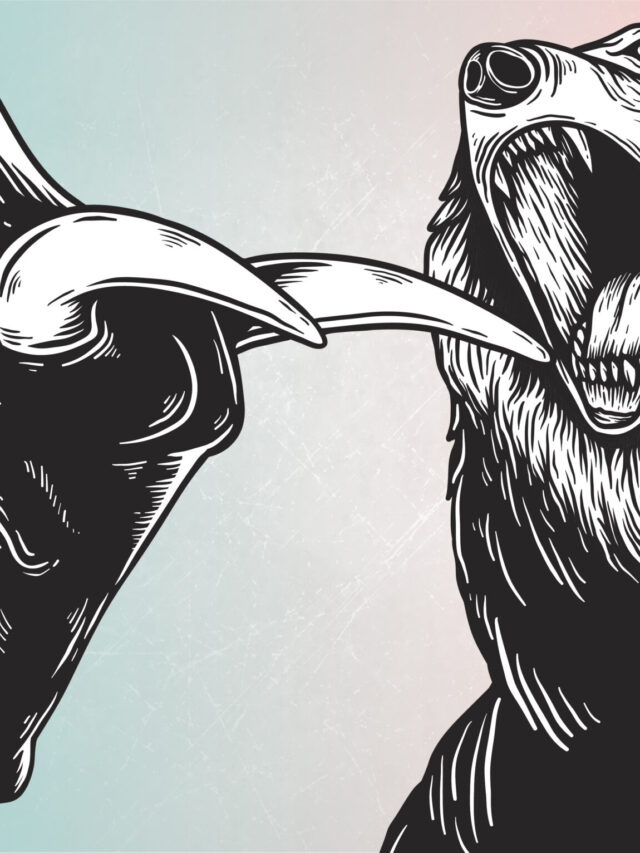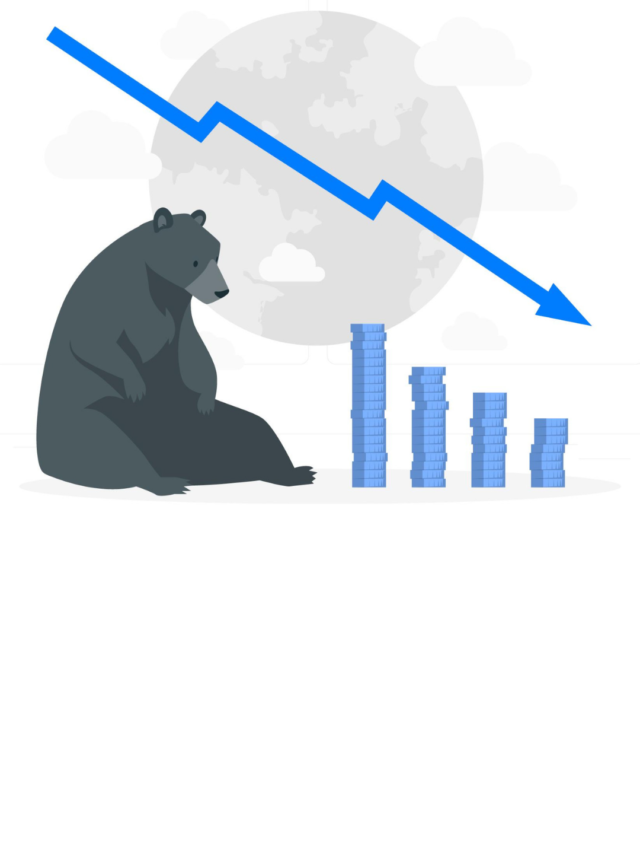
Did you know that back in the 19th century, bears and bulls in California were forced into combat as a form of blood sport and entertainment? The two are known for their strategic fighting skills, and are pitted against each other in order to appreciate the contrast in their strategies. This observation has followed the corporate world through the centuries, introducing patterns within it named after each species: the bear market and the bull market. We begin with the former type here. Let’s learn about investing in a bear market.
In investing, the bear market is a scary term. Often defined as an overall decline in investment prices or indices like S&P 500, it insinuates negative investor sentiments. A bear market occurs when stock prices drop by 20% or more over an extended period. There are usually two kinds of bear markets—minor corrections and full-fledged bear markets. The former is a common phenomenon in stock markets and is somewhat unavoidable. However, the latter is a more significant decline.
A bear market is an umbrella term. Along with stock prices, it also comprises individual securities and commodities. Lasting an average of 289 days, they are usually short-lived and are much shorter than the bull market.
Where do ‘bear’ and ‘bull’ come from?
Imagine a bear attacking its prey and swiping its paw downwards. Similarly, when the stock market trend declines, we call it a bear market. Now consider a bull that attacks its prey with its sharp horns in an upward motion. When the market notices upward trends, we call it a bull market. These attacks are metaphors for the movement of markets. Prolonged falling prices characterise the bear market when the securities fall 20% or more. This period ends when the prices reach a point where they can no longer drop, giving rise to the investor’s sentiments. When the stocks gain 20% from the recent low, a bull market sets in, marking a broad recovery in the market. However, predicting when the bear market will end and when prices have reached the bottom is difficult, making a recovery a complex procedure.
What causes a bear market?
There’s usually no specific cause of a bear market. Most of the time, the root cause is the general economic slowdown, which is due to multiple factors. These factors include—wars, pandemics, natural disasters, oil-price fluctuations, and irresponsible lending. Simply put, anything that changes the psychology of an individual towards the market and economy at large can lead to a bear market. During the COVID-19 pandemic, for instance, we saw a transition in how people conducted business. It affected investors’ psychology by impacting investing in the bear market, subsequently causing ups and downs.
How are bear markets different from corrections?

A bear market and a correction are often confused with each other. But the two terms are fundamentally different.
A correction is relatively short and graphically sharp. It’s a sentiment-driven downturn of around -10% to -20% amid a larger bull market. It’s fast.
On the other hand, a bear market is a long, fundamentally driven decline, generally exceeding -20%. Bear markets, by conventional standards, take time. Additionally, the start of a bear market is slow and gentle.
What are some crucial aspects of investing in a bear market?
Now that we’ve understood what a bear market is, let’s look at how it works and what to remember when investing in a bear market.
(1)Fluctuations in supply and demand for securities
Security is a tradeable and negotiable thing that has some monetary value. Be it in terms of stocks, bonds, or options. In the bear market, more people look to sell their securities rather than buy. In such a situation, the demand is much lower than the supply, resulting in a decline in share prices.
(2)Effect of investor’s psychology
How the market rises and falls is affected by how investors think about it. So the stock market performance, in a way, depends on investors’ psychology.
During the bear market, the sentiments are usually pessimistic. Investors lose confidence as they move their money out of equities into fixed-income securities. Because they are withdrawing on a large scale and keeping their money out of the market—it causes the stock prices to decline further.
(3)Change in economic activity
The stock market and the economy are firmly linked, where a bear market indicates a weak economy. Businesses are making lesser profits because consumers need to pay more. This steady decline in profit directly affects the value of stock in the market. In a bear market, the chances of losing money are high as stocks decline in value. Furthermore, the end of the bear market is often not in sight, which causes businesses to behave differently—altering their activities.
Some examples of global bear markets
- Nasdaq, one of the biggest stock markets in the United States, entered the bear market in March 2022. Apart from the pandemic, the Russian-Ukrainian conflict and the ban on Russian energy exports were the primary causes.
- The United States experienced another substantial financial crisis during 2007-2009. At that time, the S&P lost around 50% of its value, causing a significant political divide in the country. Some blamed the Bush administration; others blamed Obama. But the bear market didn’t care about the blame game.
- The dot-com bubble emerged in 1999-2001, and the companies attracted a massive audience. But in the year 2000, the internet bubble crashed. A few factors were to blame for it. Interest rates rose, companies ventured into the tech scene without much of a strategy, stocks fluctuated, and many firms declared bankruptcy. This crash led to a bear market, sending a massive blow to the economy.
Do bear markets mean a recession?
A recession occurs when trade and industrial activities decrease, resulting in a fall in GDP over two successive quarters. The association between bear markets and recession is not uncommon. Recessions usually accompany bear markets, but it’s not always the case. There’s a big difference. Bear markets are for the stock markets, whereas recessions are for the whole economy. In a nutshell, a bear market will affect your portfolio’s performance, but a recession will affect your wallet.
During the bear market, the economy slows down, and there’s a sudden rise in unemployment as companies begin laying off workers. This unemployment rise, in turn, triggers the economic framework. Therefore, in some cases, it is apt to say that a bear market follows a recession. But both the terms are not synonymous.
Is it good to invest in a bear market? What investments do well in a bear market?
Bear markets are scary. And when we are scared, we make hasty decisions. One of the most common phenomena during bear market trends is the hindsight bias—looking back and realising that I predicted the right outcome. But one of the critical principles in investing is discipline. It’s a long-term game. So be it bear or bull, having the bigger picture in mind is vital.
The primary guideline in the financial community concerning investing in bear markets is about following the 3-month rule. Waiting for three months allows the market to do its course in reaching its peak. In addition, this waiting period gives investors time to pause, think, and adjust their portfolios accordingly.
It is also possible for investors to invest in defensive stocks (utilities owned by the government)—changing trends in the market minimally impact their performance. As a result, they are more likely to be stable, regardless of the storms.
During a bull market, however, investors usually buy stocks when the price is rising (early in the trend) and sell them when it has reached their peak.
Both bear and bull markets have an impact on your investments. Therefore, it’s always a good idea to take some time and consult financial experts before investing in a bear market. The stock market is an area that has its ups and downs, and investing in it (irrespective of whether you’re investing in a bear market) will always be a risky business. But simultaneously, it can be advantageous if one sets foot cautiously. While there’s no guarantee of consistent market growth, patience and vision during tough times will make a huge difference!




